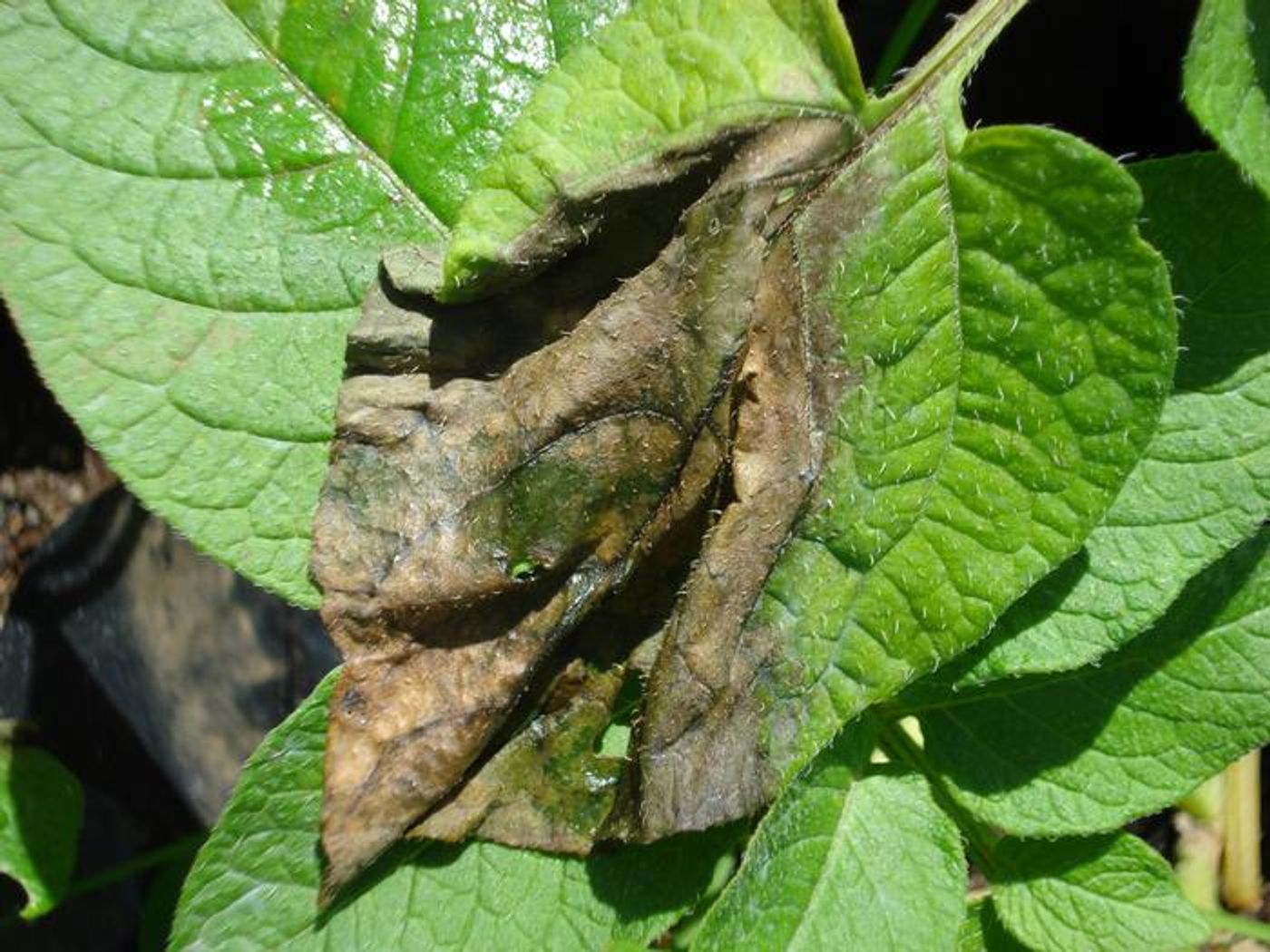Tracking the Trajectory of Late Blight Disease: A Text Mining Study from 1840s to Modern Times
Can plant diseases be tracked through analyzing past reports? This is what a recent study published in Scientific Reports hopes to address as a team of researchers at North Carolina State University (NCSU) attempted to ascertain the causes behind blight disease on plants, known as Phytophthora infestans, that resulted in the Irish potato famine during the 1840s. This study holds the potential to help scientists and farmers not only better understand the causes of blight disease in plants, but also how they might be able to predict them in the future.
Image of a blight lesion on a potato leaf. (Credit: Jean Ristaino, NC State University)
For the study, the researchers analyzed United States farm reports from 1843 to 1845 by searching for keywords, including “evil”, “murrain”, “rot”, “black spots”, and “decay”, just to name a few, within the scanned documents using the computer programming language, Python. In the end, the researchers discovered a notable increase in the usage of the keywords, “disease”, “blight”, and “rot” within the reports between 1843 and 1845, with the researchers noting the usage of these keywords began occurring in 1844, indicating the disease began in 1843.
“We went back to original descriptions of the potato disease outbreaks in the United States because they occurred between 1843 and 1845, before outbreaks occurred in Europe,” said Dr. Jean Ristaino, who is a William Neal Reynolds Distinguished Professor of Plant Pathology at NCSU and a co-author on the study. “We searched those descriptions by keywords, and by doing that we were able to recreate the original outbreak maps using location coordinates mentioned in the documents. We were also trying to learn what people were thinking about the disease at the time and where it came from.”
Additionally, the researchers also analyzed tweets over a 10-year period between 2012 and 2022 to obtain present-day reports of P. infestans, along with using Google Ngram to discover a sharp increase in P. infestans in the 1950s, the latter of which was a surprise discovery for the researchers. Going forward, the team plans to expand this work for other diseases to ascertain their histories, as well.
What new discoveries will scientists make about plant blight diseases and how to predict them in the coming years and decades? Only time will tell, and this is why we science!
As always, keep doing science & keep looking up!
Sources: Scientific Reports, EurekAlert!, NC State University News









